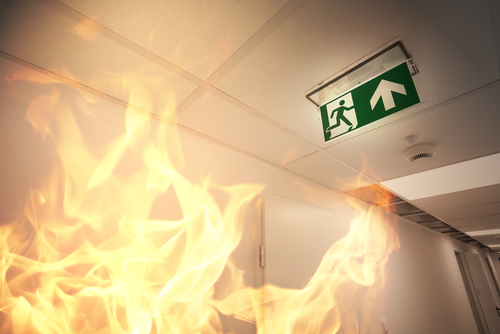The triumphs and failures of fire regulation
BSI Features Writer
Published date: |
|
Modified date: |
|
 How do fire regulations come about? Unfortunately, it usually takes a catastrophe to make people take notice of the need for new protections. Time and again through history, new regulations are introduced following a disaster.
How do fire regulations come about? Unfortunately, it usually takes a catastrophe to make people take notice of the need for new protections. Time and again through history, new regulations are introduced following a disaster.
The pattern is as old as fire safety itself. Fire regulations are far from new – the first comprehensive laws were introduced after the Great Fire of London in 1666. King Charles II ordered that the rebuilt city must have stone walls, wide roads and fewer narrow alleys.
The slow development of fire safety
Until the late-twentieth century fire regulations were fairly piecemeal. New rules were introduced following public outcry at major fires, for example the deaths of 186 people in 1887 in an Exeter theatre led to requirements for the first fire exits. Fire alarms in factories were introduced following the deaths of eight people at Eastwood Mills, Keighley, Yorkshire in 1956.
Once fire regulations were applied to large capacity sites such as theatres and factories, attention turned to smaller venues. Regulations for shops were tightened after major fires including the 1960 blaze at William Henderson and Sons department store in Liverpool, in which ten people were trapped on the fourth storey of the building.
Hotels came under the microscope following the tragedy at the Rose and Crown Hotel, Saffron Walden on Boxing Day 1969. Eleven people were trapped within the hotel as fire broke out overnight and they all lost their lives.
Although the hotel had fitted fire safety measures such as fire doors and alarms, these did not work properly. In the aftermath of the fire, a law was passed requiring premises to obtain a fire certificate showing safety precautions would be effective in an emergency.
Consolidated fire regulations
The 1971 Fire Precautions Act consolidated previous laws and gave the government powers to apply additional fire safety requirements to different types of premises. The scope of fire legislation was slowly widened to include workplaces employing more than 20 people, sites using flammable substances and boarding houses.
Guidelines continued to be tightened in response to major fires. For example, the 1987 Kings Cross Underground fire, which started beneath a wooden escalator, prompted additional regulation of underground railway networks.
Further legislation was passed in the 1990s and early 2000s, until a review found around 80 separate pieces of legislation applied to fire safety. The Regulatory Reform (Fire Safety) Order was passed in 2005, consolidating existing legislation.
This law introduced a major change by placing emphasis on risk assessments rather than rigid laws, making premises owners responsible for checking their property was safe in practice as well as in principle. Employers and premises owners now have to prepare emergency plans and train staff, as well as other measures to reduce the risk of fire.
What next for fire regulation?
Social conditions do not stay still, so there will always be new challenges for fire regulations to address. It may be that a new building structure or working method will be created meaning that extra regulation, or perhaps the enforcement of existing regulation, will need to be strengthened.
The housing crisis has resulted in the phenomenon of ‘beds in sheds’, or people living in unsuitable structures. The London Fire Service says 432 fires in such premises have taken place since 2010, killing 14 and seriously injuring 83 people. The sheds or outhouses typically used have none of the precautions such as fire doors and alarms which are required by law in residential structures. The issue has mainly been addressed as a breach of landlord and tenant law, rather than a fire issue.
Fire safety has also been raised as a concern for home-sharing site Airbnb, which offers a similar service to traditional B&Bs but operates on a less regulated basis. A government minister confirmed in 2014 that fire regulations apply to anyone accepting paying guests, but Airbnb leaves compliance to individual home owners, making enforcement difficult.
The safety of children’s Halloween costumes
The safety of children’s Halloween costumes was brought into focus in 2014. TV presenter Claudia Winkleman’s eight-year-old daughter was seriously burned when her dress brushed against a candle, catching fire in seconds. Statistics for England show 94 people were admitted to hospital last year as a result of clothing igniting or melting, including 21 children under 18 years.
In September 2015 the government announced that spot checks would be made on retailers to ensure children’s costumes comply with fire safety standards. The decision to look at enforcement through Trading Standards followed a call from MPs for tougher safety regulations on children’s fancy dress.
Claudia Winkleman welcomed the clamp down on costume standards, saying: “We’re extremely happy that the government is taking action on this and we’re so grateful to the supermarkets who are selling safer costumes.”
BSI is currently carrying out an assessment to determine whether Halloween costumes should be classed as toys or clothing.
Click here to provide feedback

